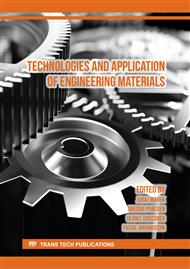p.93
p.101
p.111
p.119
p.127
p.135
p.143
p.151
p.161
The Utilization of Geopolymer Mortar as Permanent Formwork in Reinforced Concrete Beam
Abstract:
In the construction industry, wood is frequently used as a form material in large quantities. Wood in form is only used three to six times before being discarded, resulting in non-recyclable wood waste. This can be avoided by substituting wood as a formwork material. One of the efforts to reduce the number of wood forms is to use a permanent formwork. This permanent form has a number of benefits, including a low cost, environmental friendliness, the ability to increase the strength of building elements, and efficiency. Therefore, it is of interest to investigate the effects of Permanent Formwork on the strength of building elements. Permanent Formwork, geopolymer mortar, and normal concrete are used to create six test specimens with dimensions of 600 x 150 x 150 mm, cubes of 50 x 50 x 50 mm, and cylinders of 100 x 200 mm. There are two test beams in each variant. This Permanent Formwork can withstand loads of up to 12.2 MPa, according to the test results. These findings show that Permanent Formwork can effectively increase the strength of structural elements that are nearly half the strength of control beams.
Info:
Periodical:
Pages:
143-149
Citation:
Online since:
June 2023
Keywords:
Price:
Сopyright:
© 2023 Trans Tech Publications Ltd. All Rights Reserved
Share:
Citation:



